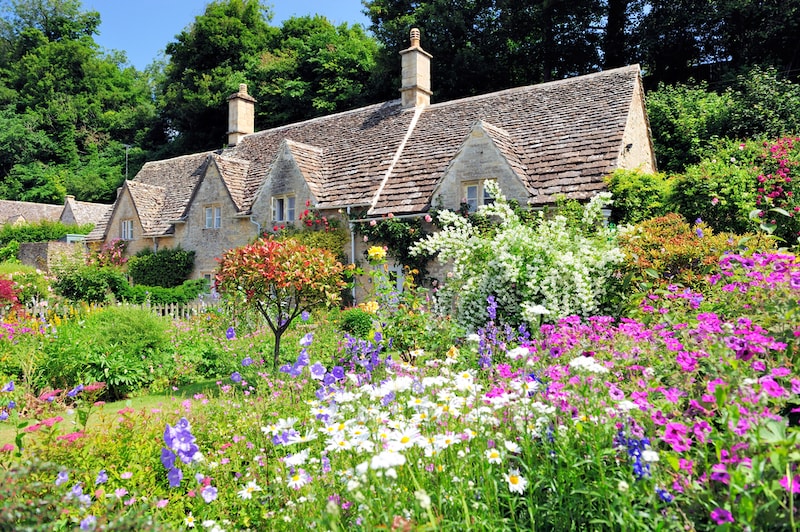If you’ve always wanted to create the perfect cottage garden, here’s where you’ll find all the tips you need to make it happen. To help bring your dreams to life, we turned to some of our favourite bloggers, YouTubers and Instagrammers for their best advice on cottage garden plants. Even if you live in an urban jungle, here’s everything you need to know about creating an effortlessly charming cottage garden of your own.
Contents:
- What is a cottage garden?
- How to plan a cottage garden
- Best plants and flowers for cottage garden
- Caring for cottage garden plants and flowers
What is a cottage garden?
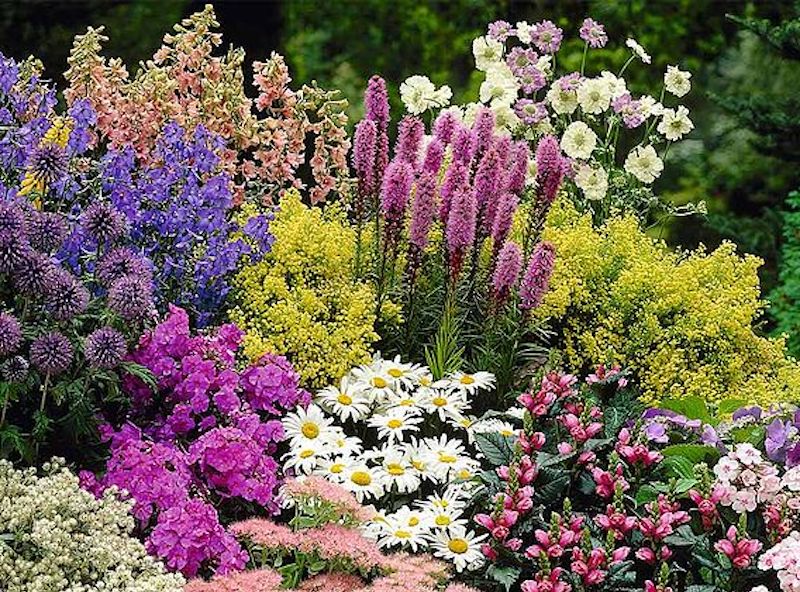
Image: Cottage Garden Perennial Plants – Suttons Mixed Selection
Close your eyes and picture the scene of a delightful garden in the country. It’s “abundant in colour, flowers, natural textures, and casual elegance…bees and butterflies hover above blossoms, and…birds sing from climbing vines. That’s the essence of an English cottage garden,” says Tanya of Lovely Greens. If you want to grow one, check out her comprehensive introduction to this popular style.
Here at Suttons, our experts say a cottage garden is notable for its riot of colour and informality. But, they go on to explain: “If you’d like to create your own rural idyll, success depends on managing your planting so that it looks wild and unplanned but is, in fact, the result of very careful thought, preparation and execution.”
According to a wonderful article from The Gardens Trust, the first significant use of the term ‘cottage garden’ came in 1796 when social reformer Thomas Bernard wrote a pamphlet titled, An Account of a Cottage and Garden near Tadcaster. The purpose of the publication was to show how cottage gardens could improve the lives of the landless poor in the wake of the Acts of Inclosure. Charting the journey from subsistence farming to today’s flower-filled oases, The Gardens Trust offers fascinating reading.
How to plan a cottage garden
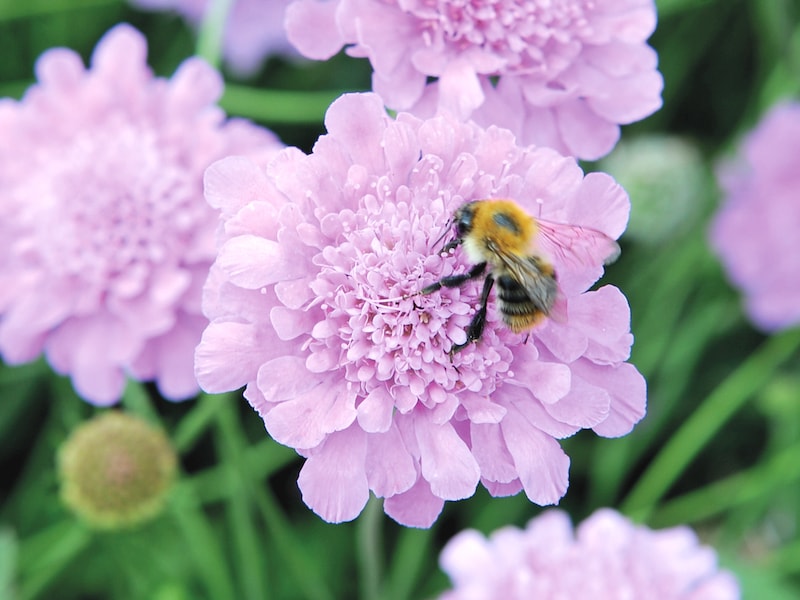
Image: Scabiosa incisa ‘Kudo Purple’ from Suttons
If you’re planning a cottage garden, your design should include, “flowers, fruit trees, herbs, and vegetables growing alongside each other in an informal, almost casual way,” says the horticultural team here at Suttons. They go on to explain: “These gardens rarely include much lawn and should be densely planted with lots of different colours, shapes, and heights that just about work together, but without looking contrived.”
You can grow anything you like in your cottage garden, says Alexandra at The Middle-Sized Garden. “But I think it’s quite a good idea if you make up your own rules.” Broadcasting from the YouTube channel she runs alongside her excellent blog, Alexandra provides examples of gardeners who only choose plants which are easy to grow and common. Others set themselves a rule never to grow anything white and black, for example, or yellow and orange. Highly informative, this video will get you thinking about what your own ‘rules’ will be.
Cottage gardeners “spend very little, propagate lots and share compulsively,” says Ben Vanheems at YouTube channel, Grow Veg. In his captioned photo montage, he says plants we associate with this style of gardening originally had a purpose – like hollyhocks which people grew near walls to control rising damp. In creating your own garden, he advocates simple massed flowers (no room for weeds), less defined borders, more mixed planting, and companion planting.
If it’s low maintenance cottage garden style you’re after, Julie Quinn at London Cottage Garden says: “The planting in my front and back garden is 95% green, and yet it’s a very colourful garden.” Julie archives this effect with a bright front door, big golden yellow ceramic pots and fleeting flashes of colour through the year – think “yellow daffodils, orange and red tulips, purple and pink hardy geraniums, mauve thalictrum, and purple alliums.”
Best plants and flowers for cottage gardens
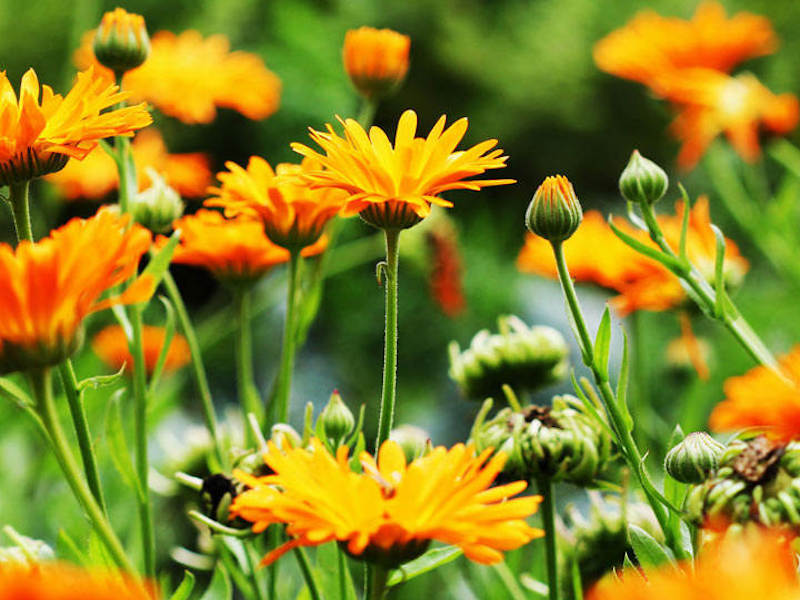
Image: Calendula (Organic) officinalis Seeds from Suttons
If you’re looking for some stalwart easy-grow cottage garden plants to get you started, Daniel Carruthers at The Enduring Gardener gives you his top five recommendations. Beginning with “stately” lupins, and aromatic rosemary, his other choices include plants for vertical interest and those with textured foliage. Watch his video to see the rest of his favourites.
No cottage garden is complete without some lovely hollyhocks. For a gorgeous view of this lovely plant, take a quick look at this colourful reel from Mary-Lou of @english_cottage_garden. She says, “these hollyhocks are absolute bee magnets with a constant stream of pollen laden bees visiting them (even on windy days like today)!”
Henry of @henryhoblog loves the combination of foxgloves and lupins. Do have a peek at his Insta which shows just how lovely the two look together. He writes, “this foxglove was a self sown seedling I transplanted here from one of the veg beds, and I think it’s a mix between a purple one and Alba. I have to say the pink looks amazing in this border.”
For a cottage garden staple, you can’t go far wrong with Marigolds (Calendula officinalis). These lovely vibrant yellow blooms are wonderful for attracting pollinators and do a great job as companion plants – keeping the pests off your tomatoes, beans, peas and more. Over at Plews Garden Design, pro gardener, Marie gives you all the information you need to grow this lovely plant. The good news, she adds, “once they decide they’re happy in your garden, Calendula will self seed.”
For a truly delightful cottage garden flower suggestion, do take a look at this video from Gardener’s Cottage Blakeney. Here you’ll find English Peony, Sarah Bernhardt in full bloom. If you’re looking for a classic combination, plant yours with traditional English roses. And don’t forget to support your peonies – here they’re propped up on metal half-moon supports.
Part of the appeal of a cottage-style garden is the changing seasons, each of which brings its own special charm. Avid Instagrammer and keen gardener Mary-Lou of @english_cottage_garden explains that the end of summer isn’t something to dread. Instead, “everything in the garden’s softening down, mellowing and taking on a more relaxed beauty…” Take a quick peek at her lovely photo that perfectly captures this special transitional feeling!
Caring for cottage garden plants and flowers
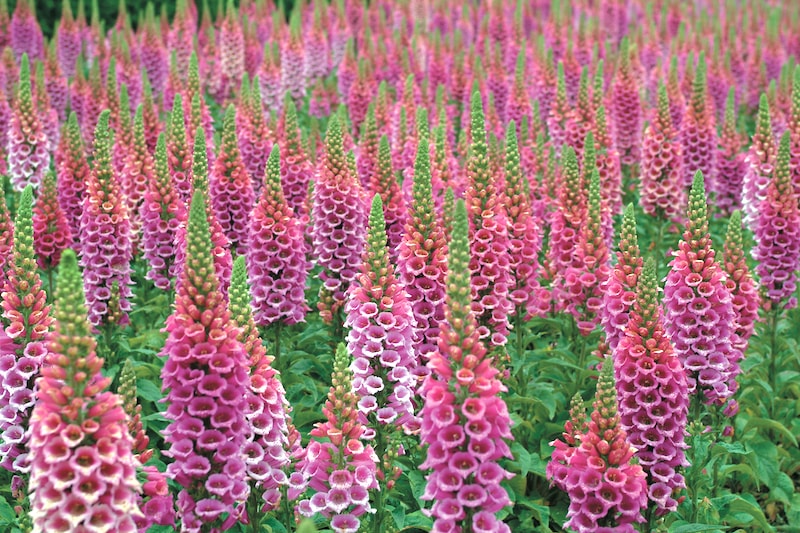
Image: Foxglove Candy Mountain from Suttons
If you’re planting ranunculus and anemones, presoaking the corms really is a must – as is protecting them from squirrels and mice! Head over to watch Annette at YouTube channel CottoVerdi as she shows you how to get your corms to sprout, and prevent them from becoming a spring picnic for ravenous rodents.
While on the subject of ranunculus, Amelia Cooper of @ameliasflowerfarm shares some lessons she picked up when a virus wiped out an entire polytunnel of this lovely flower along with half her crop of poppies. “Much more air flow,” says Amelia! “I kept covering the crop with fleece when it wasn’t cold enough to warrant it – so much easier to kill plants with kindness rather than neglect.” Head over to her Insta to find out what else she learned.
Wondering what to do when your hollyhocks are over? Visit Gardeners Cottage Blakeney where this YouTuber demonstrates how to cut them back and collect seeds for next year. He showcases a hollyhock he left to run to seed and one he cut back much earlier and which has produced buds ready for a smaller, but very welcome, September flowering.
Remember that a cottage garden isn’t about creating perfection. In fact, says Tanya at Lovely Greens, it’s never finished: “There’s always something you can add or remove, and sometimes your garden does that itself too. Over time some plants might not take, while others colonise every space that you allow them. Have fun growing your dream garden.”
We couldn’t agree more. We hope you’ve been inspired by the joys growing your own cottage garden. If you’re interested to know more about gardening for food or flowers, head over to our Growing Guides where you’ll find a wealth of help and advice.
Lead image: Shutterstock
Last Updated on November 8, 2024 by Suttons Horticultural Team

